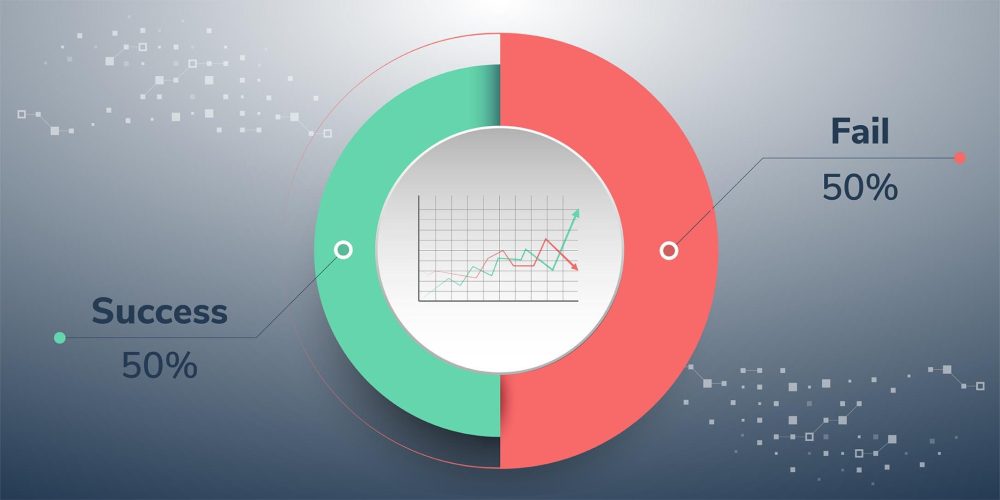Advanced Planning and Scheduling (APS) solutions based on artificial intelligence and digital twins significantly increase productivity and flexibility and enable effective response to labor shortages and supply chain uncertainties. Unfortunately, most companies are not aware of all the pitfalls that await them when implementing these solutions.
Manufacturing is constantly faced with the paradoxical pressure to simultaneously reduce inventory and shorten lead times. Conditions are worsened by the demand for higher productivity and flexibility, as well as high-mix, low-volume production.
Three people take care of firefighting full time!
Despite increasingly uncertain market conditions, companies still struggle with downtime, standstill and delays when they do occur. As a result, on average, up to three people in the company are working full-time on firefighting! Quick response and corrective action can reduce the damage caused by unexpected events, but the need to predict them in advance and prepare for them is rapidly increasing.
Double the implementation time
This is why companies that are pioneers of digital transformation are rapidly implementing APS solutions. Unfortunately, we always find users among them who test all the functionalities and are disappointed to find that these solutions do not work because they create production plans that are completely unrealistic! The bad mood is also caused by implementation delays. Typically, implementation, which depends on the size of the company, takes an average of six to 12 months. However, feedback from the market shows that this time is usually twice as long!
If we take a step back and consider our experience from more than 30 successful implementations of APS solutions in the CEE and DACH region, we can identify the main reasons why up to half of these implementation projects fail.
Key team members and their constant presence
First and foremost, both the user and the provider of the APS solution must appoint an excellent project manager and designate a key user, who is usually an experienced production planner. In addition, all key team members must be present at all times or adequately replaced in the event of a departure or extended absence.
Clear understanding of the offer and deliverables
The next step is to ensure that the user and the solution provider truly align their expectations. A clear and mutual understanding of all components of the offering and the expected outcomes and functionality is really critical! For a company deciding to implement an APS solution, a reference visit can be very welcome, where they can review the experience of an APS solution in another company.
Timeline, blueprint and processes
Key preparatory steps for a successful implementation include a determined timeline, a factory blueprint and a clear definition and consolidation of all key workflows and processes. This includes master data editing, necessary organizational changes and adjustments of the company’s workflows. This phase must include both the business and production levels of the company, including the IT department.
Difficult consolidation
Consolidating all the key workflows and processes is often the most difficult, as knowledge and skills for implementing APS solutions are scattered throughout the company. Some companies also do not want to go that deep into this inventory. Those who have already been burned know that this is a critical step, otherwise a whole host of organisational, IT, and strategic challenges quickly emerge.
Critical editing and maintaining of master data
In practice, it is unfortunately often the case that users want to add new and new features rather than build a solid foundation for the solution they are implementing. Editing and maintaining master data is very important, if not the most critical, to the success of implementing an APS solution. This data includes norms and standards, technological procedures or routings, task matrix (rinsing, disinfection …), etc., as well as different production versions. We must also take into account changes. Companies introduce new products and lines, improve technological procedures … All this must be entered in time and maintained in the ERP system. The main obstacle that prevents this is the lack of human resources.
The gap between planning theory and shop floor reality
One of the failure factors in implementing APS solutions is also the gap between planning theory and shop floor reality. Even when master data is edited and maintained, production plans and schedules may still need to be corrected and adjusted.
This problem usually occurs when the master data has been established by the technology based on theory and experience during the time of its development. However, if the master data is not maintained in the ERP system, it does not reflect the real situation.
This usually happens in companies that have too many products, so data analysis and maintenance would take too much time. Therefore, production plans and schedules based on this type of data differ from reality.
So what can companies do to avoid disappointment, waste of time and money, and distrust of modern technologies? And most importantly, how can they avoid firing the employees who led the APS implementation project?
Tips for successful implementation of APS solutions
Summarising our users’ experiences and feedback from the market, it is important to coordinate well with the vendor so that both parties equally understand everything that is in the offer. To successfully implement the APS solution, companies need to allocate sufficient human resources and actively develop their digital skills at management and operational levels. Above all, they must be prepared for changes and improvements of workflows and processes, as well as possible confrontations with skeletons in the closet.
How artificial intelligence and a digital twin can help
Finally, one more thing that cannot be stressed enough – the company must have a person dedicated to maintaining master data! Since we know this is a challenge, it makes even more sense to implement solutions based on advanced artificial intelligence and digital twin technologies. The digital twin of the factory continuously learns and operates with real data from production, which it also displays to the user, while maintaining it in the ERP system.
Feedback loop guaranteed
Another advantage of the digital twin and AI-based APS solutions is that both planners and team leaders use the same tool when planning and scheduling production. This allows us to avoid the situation where the APS solution creates a plan that goes to production in the form of a spreadsheet, but we have no guaranteed feedback loop on what is actually happening on the shop floor. Also, it is extremely welcome for the production planners to not only see predicted problems in production, but also to see the impact of the problem on both the production plan and the actual realisation.
Planning theory and shop floor reality united
Once we have achieved that the APS solution unifies production planning theory and shop floor reality, production plans and schedules become much more realistic. Companies also save time and can prepare and react much more effectively to unexpected events before they occur.

Gregor Sablič
CSO at QLECTOR












